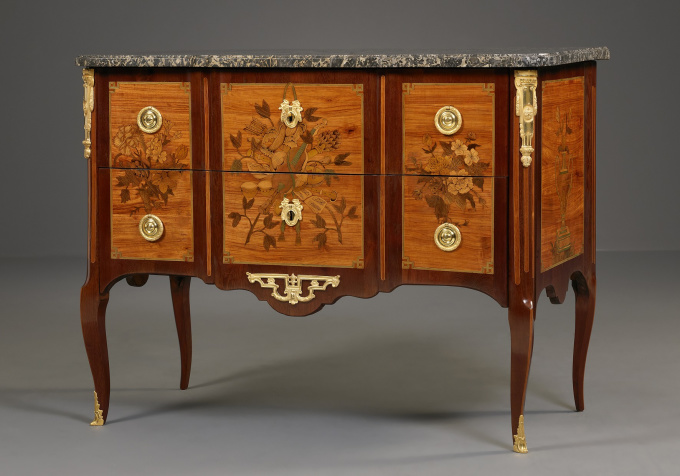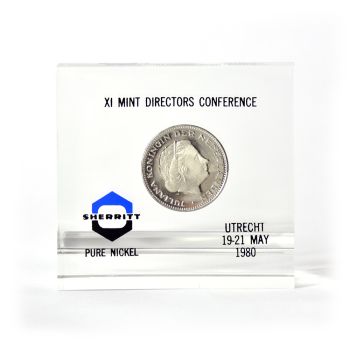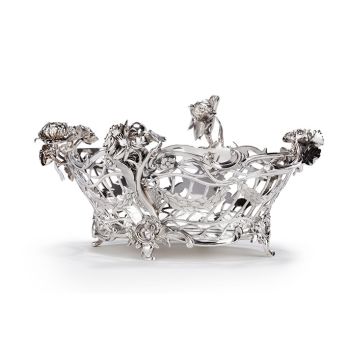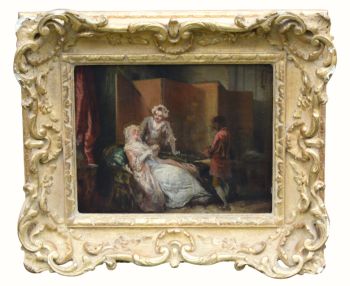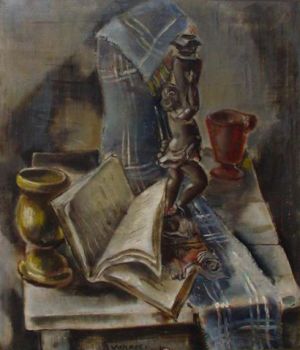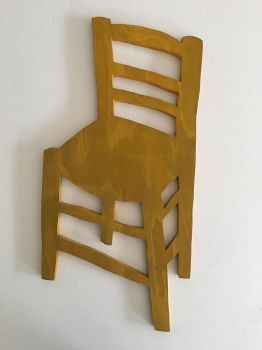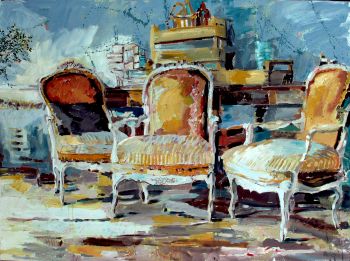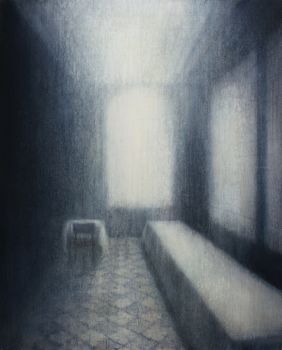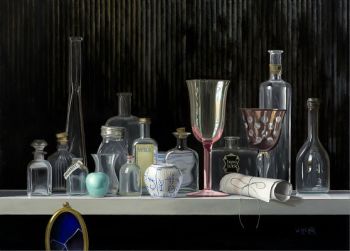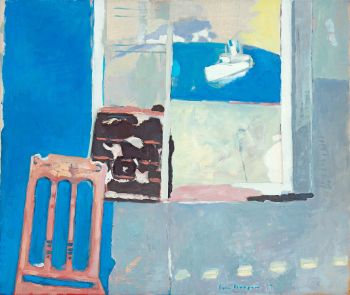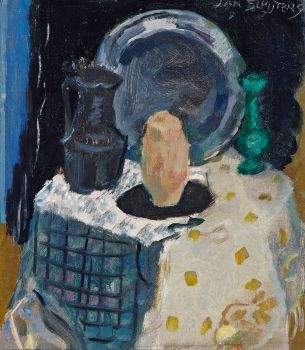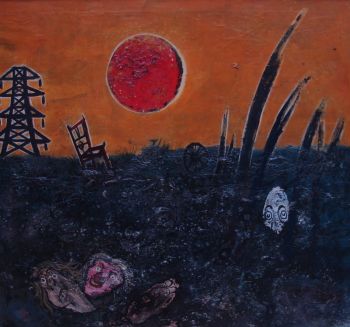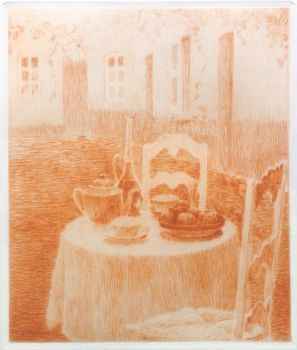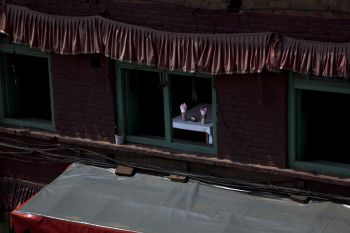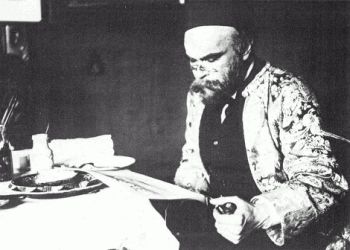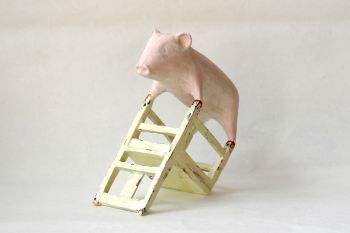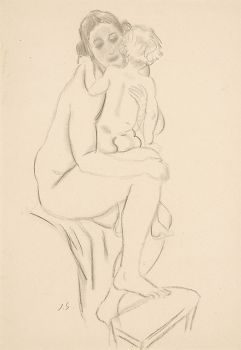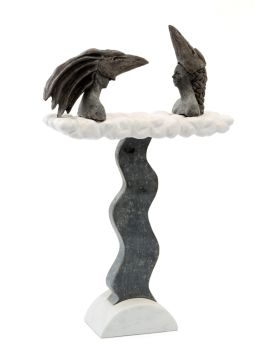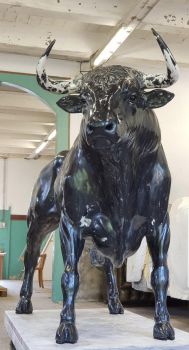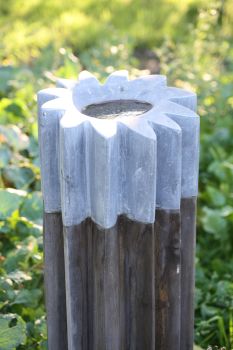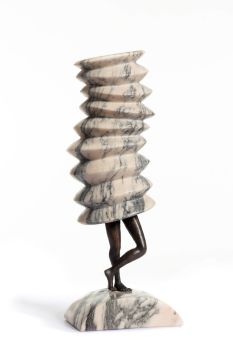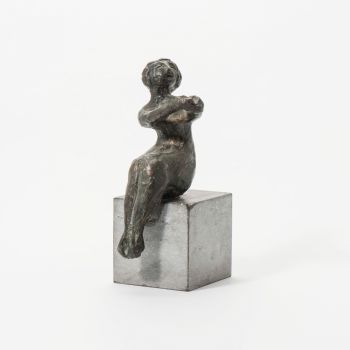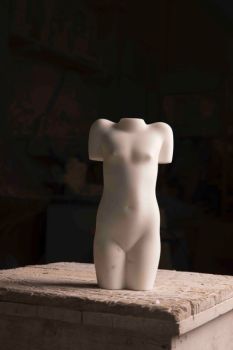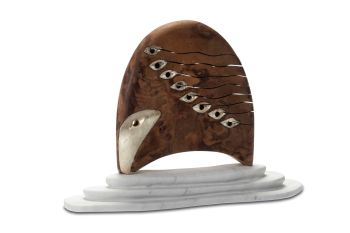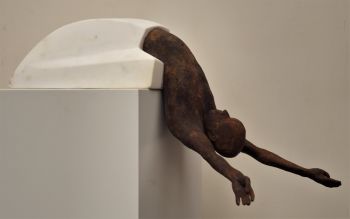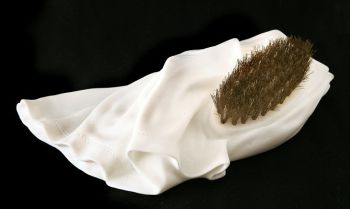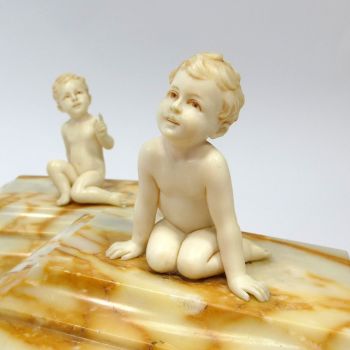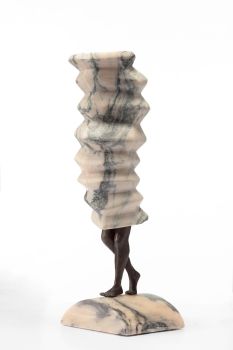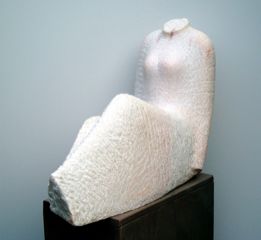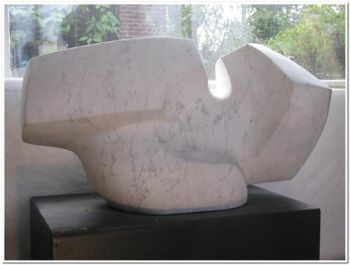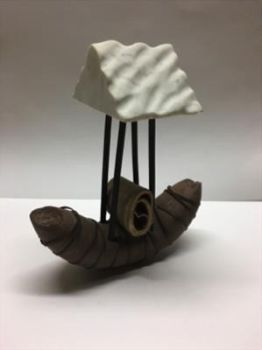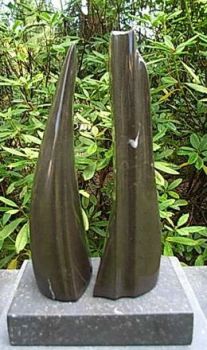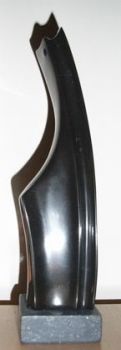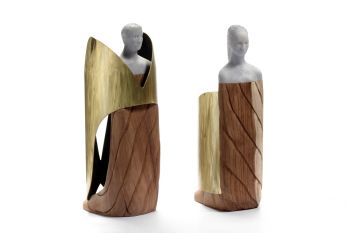French Transitional Commode 1770
Artiste Inconnu
MarbrePierreBoisMarbre grischênebois de rose
87 ⨯ 114 ⨯ 61 cm
Actuellement indisponible via Gallerease
- Sur l'oeuvre d'artThis is the signature of Jacques Bircklé (1734 – 1803) who became a “maïtre ébéniste” (master furniture maker) in 1764 and who also was a “Juré des Menuisiers-Ebénistes”: a Juror both of the Guild of Woodworkers and the Guild of Furniture makers.
Jacques Bircklé produced wonderfully varied and fashionable furniture, always of the highest quality. He was an exceptionally able marqueterie maker and used different sorts of wood and coloured wood to great effect. He frequently used light coloured woods on a darker ground and his themes: vases, flowers, garlands and music-trophy’s are usually surrounded by a Greek fret.
Bircklé used to work for members of the French Royal House: Queen Marie-Antoinette, Madame Elisabeth (the youngest sister of King Louis XVI and the Duke of Orléans. And to this day his work is to be found in the Palace of Versailles and the Petit Palais in Paris, as well as in the Museum of Decorative Arts in Paris.
The commode of Transition form with a breakfront, has two drawers. The four rounded off corners as well as the corners of the breakfront are decorated with marqueterie representing a fluted column. The front of the commode is divided into three panels, the sides contain one panel each. All panels are surrounded by Greek frets.
The middle panel on the front shows a music-trophy with a violin, several flutes, drums, a horn and a score. Added to the instruments and score are a quiver, a torch and two birds.
On the left and right of the front the marqueterie within the panels consists of bunches of flowers. Both on the right and left side of the commode, the marqueterie shows a plinth with a vase containing several flowers.
The marqueterie of the middle panel on the front is very similar to that on a commode illustrated in Kjellberg, Le mobilier français du XVIIIe siècle, Paris 2002, p. 77, ill. d.
Stamped: J*BIRCKLE JME. - Sur l'artiste
Il peut arriver qu'un artiste ou un créateur soit inconnu.
Certaines œuvres ne doivent pas être déterminées par qui elles sont faites ou elles sont faites par (un groupe d') artisans. Les exemples sont des statues de l'Antiquité, des meubles, des miroirs ou des signatures qui ne sont pas claires ou lisibles, mais aussi certaines œuvres ne sont pas signées du tout.
Vous pouvez également trouver la description suivante :
•"Attribué à …." A leur avis probablement une oeuvre de l'artiste, au moins en partie
•« Atelier de …. ou « Atelier de » À leur avis, une œuvre exécutée dans l'atelier ou l'atelier de l'artiste, éventuellement sous sa direction
•« Cercle de… ». A leur avis une oeuvre de la période de l'artiste témoignant de son influence, étroitement associée à l'artiste mais pas forcément son élève
•« Style de … ». ou "Suiveur de ...." Selon eux, une œuvre exécutée dans le style de l'artiste mais pas nécessairement par un élève ; peut être contemporain ou presque contemporain
•« Manière de… ». A leur avis une oeuvre dans le style de l'artiste mais d'une date plus tardive
•"Après …." A leur avis une copie (quelle qu'en soit la date) d'une oeuvre de l'artiste
•« Signé… », « Daté… ». ou « Inscrit » À leur avis, l'œuvre a été signée/datée/inscrite par l'artiste. L'ajout d'un point d'interrogation indique un élément de doute
• "Avec signature ….", "Avec date ….", "Avec inscription …." ou "Porte signature/date/inscription" à leur avis la signature/date/inscription a été ajoutée par quelqu'un d'autre que l'artiste
Artwork details
Related artworks
- 1 - 4 / 12
Artiste Inconnu
A Surinam-themed Amsterdam long-case clock1746 - 1756
Prix sur demandeZebregs & Röell - Fine Art - Antiques
 Sélectionné par
Sélectionné parGallerease Magazine
1 - 4 / 17Artiste Inconnu
UN RARE GRAND TÉLESCOPE EN CUIR LAQUÉ JAPONAIS1750 - 1800
Prix sur demandeZebregs & Röell - Fine Art - Antiques
1 - 4 / 24Willem Witsen
Vintage portrait photograph of Paul Verlaine (sitting)1850 - 1900
Prix sur demandeKunsthandel Pygmalion
1 - 4 / 24- 1 - 4 / 24

